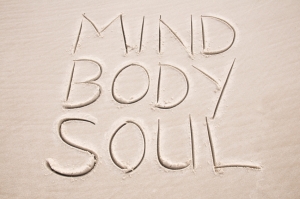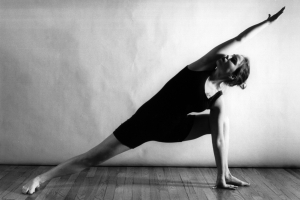Physiological Stress, Psychological Distress and Counseling
Latest published article by Liz O’Donnell, PhD
 The body’s response to stress is designed to be protective. In the most primitive of circumstances when an individual experiences imminent fear or danger the immediate physiological response that is elicited allows us to either run or defend ourselves against threat – you will know this as the fight/flight response. In some situations with some people a freeze response might also occur. (Please check out this link for a simple explanation of the stress response www.simplypsychology.org/stress-biology.html.
The body’s response to stress is designed to be protective. In the most primitive of circumstances when an individual experiences imminent fear or danger the immediate physiological response that is elicited allows us to either run or defend ourselves against threat – you will know this as the fight/flight response. In some situations with some people a freeze response might also occur. (Please check out this link for a simple explanation of the stress response www.simplypsychology.org/stress-biology.html.
Over our lifetime -and with influence of our particular life narrative – many events and circumstances can begin to trigger the stress response – even those that we might tell ourselves in our head don’t warrant it. In fact even telling ourselves that might trigger the stress response! In severe panic or anxiety situations this is experienced as an overwhelming flooding that might include elevated heart rate, sweaty palms, dizziness, nausea, and a sense of impending doom. In a less severe but more chronically experienced situation this might be experienced as restlessness, frequent rumination on the same topic leading to frustration, anger or hopelessness, irritability and self criticism or criticism of others, retreat from self-care, poor sleep etc. etc. All of the emotions that are associated with stress are valid and informative – the disconnect develops when it seems impossible to distinguish one emotion from another and when the underlying reason for the emotion has not been explored, understood, and/or perhaps shared with the people in our lives we care about and we want to fully know us. Anything in our lives that feels like performance i.e. requiring us to be someone we are not (unless you are an actor!) has the potential to elicit the stress response because performance requires us to move from who we believe ourselves to be to who we believe we should be. This is neither good or bad – unless we are experiencing stress and distress as a result of our performance. Then the cascade of physiological reactions that are initiated by the feeling of fear or danger keep us in a chronic state of ‘what if’?’ I am interested in helping individuals and couples become familiar with the multiple ways in which they hear, imagine, feel, and negotiate their world around them to better implement meaningful ways of change. These strategies are particularly helpful for couples who can both be experiencing individual difficulties that become compounded by the relationship dynamic.
Evidence also indicates that when our heart rate is elevated over 100 bpm due to a trigger of the stress response we will be far less likely to hear or notice what is being said to us. Consider how this plays out in an argument or situation where we feel unsafe, condemned, or neglected? We might shut down or shut out the stimuli (or person) who we believe contributes to our stress response likely increasing the possibility that this event will reoccur (often perpetually), and with little chance of a meaningful change in outcome. This is part of the habit of being ‘us’. I work to help clients understand and break that habit when they have determined that something they are doing is not working for them. Sounds simple – well habits are habits because we do them a lot – so developing new ones we like will require a similar philosophy to be applied – the philosophy is simple the implementation more complex:-) Turning on your own system of healthy habit development is the most powerful thing you can do and you will own it forever.
Consider taking Dr. John and Julie Gottman’s Negative Sentiment Override Quiz available at their Blog: www.gottmanblog.com/2012/08/what-makes-love-last-negative-sentiment.html
For information on meditation please try the following links:
www.shambhala.org/teachers/pema
Pelvic Physical Therapy
Referral to a pelvic physical therapist is available upon consultation – education and recommendations for self treatment is part of my initial appointment- I highly recommend the book Ending Female Pain A Woman’s Manual -The Ultimate Self-Help Guide for Women Suffering from Chronic Pelvic and Sexual Pain by Isa Herrera, MSPT, CSCS
As a physical therapist, yoga teacher, and psychotherapist Liz brings a unique understanding and professional expertise to her work with every clients. With respect to the pelvis in-particular, the muscles, ligaments and fascial tissues of the pelvic floor can be sources of significant pain for women. Although the association between pelvic pain and infertility is not clear, women who complain of discomfort in the vaginal, anal, and pelvic area often struggle to find an effective treatment to address their symptoms. Once a medical reason for pain has been ruled out it is important to understand the mechanisms, both psychological and physical, that contribute to the experience of pain and dysfunction. Pain can originate from within the pelvic cavity or the vagina, as well as from the tissue of the vulva. In addition, low back pain, irritable bowel, or conditions such as endometriosis, can create secondary problems that might also impact muscle function and balance as well as the alignment of the bones and other structure in the pelvis. I am currently referring clients who begin their work with me as a counselor to another physical therapist with whom I work closely.
 There are several ways in which emotional or psychological issues can impact healthy physical and physiological functioning. Teasing apart the physical pain from the emotional or psychological pain is complex. Management requires an integrative holistic approach that takes into consideration the unique experience and circumstances of the individual. For more complete information on pelvic conditions I have provided links to their associated national organizations and/or education sites below.
There are several ways in which emotional or psychological issues can impact healthy physical and physiological functioning. Teasing apart the physical pain from the emotional or psychological pain is complex. Management requires an integrative holistic approach that takes into consideration the unique experience and circumstances of the individual. For more complete information on pelvic conditions I have provided links to their associated national organizations and/or education sites below.
This link to Talli Rosenbaum’s site has great articles and information of the role of physical therapy in pelvic/sexual health: http://www.physioforwomen.com/index_e.html
Kegel (Pelvic) Exercises:
Pelvic Pain:
www.pelvicpain.org and www.pudendal.info/index.htm
Dyspyreunia (pain with intercourse):
www.pelvic-health.com/Dyspareunia-article.html
Vulvodynia:
www.nva.org and www.vulvodynia.com
